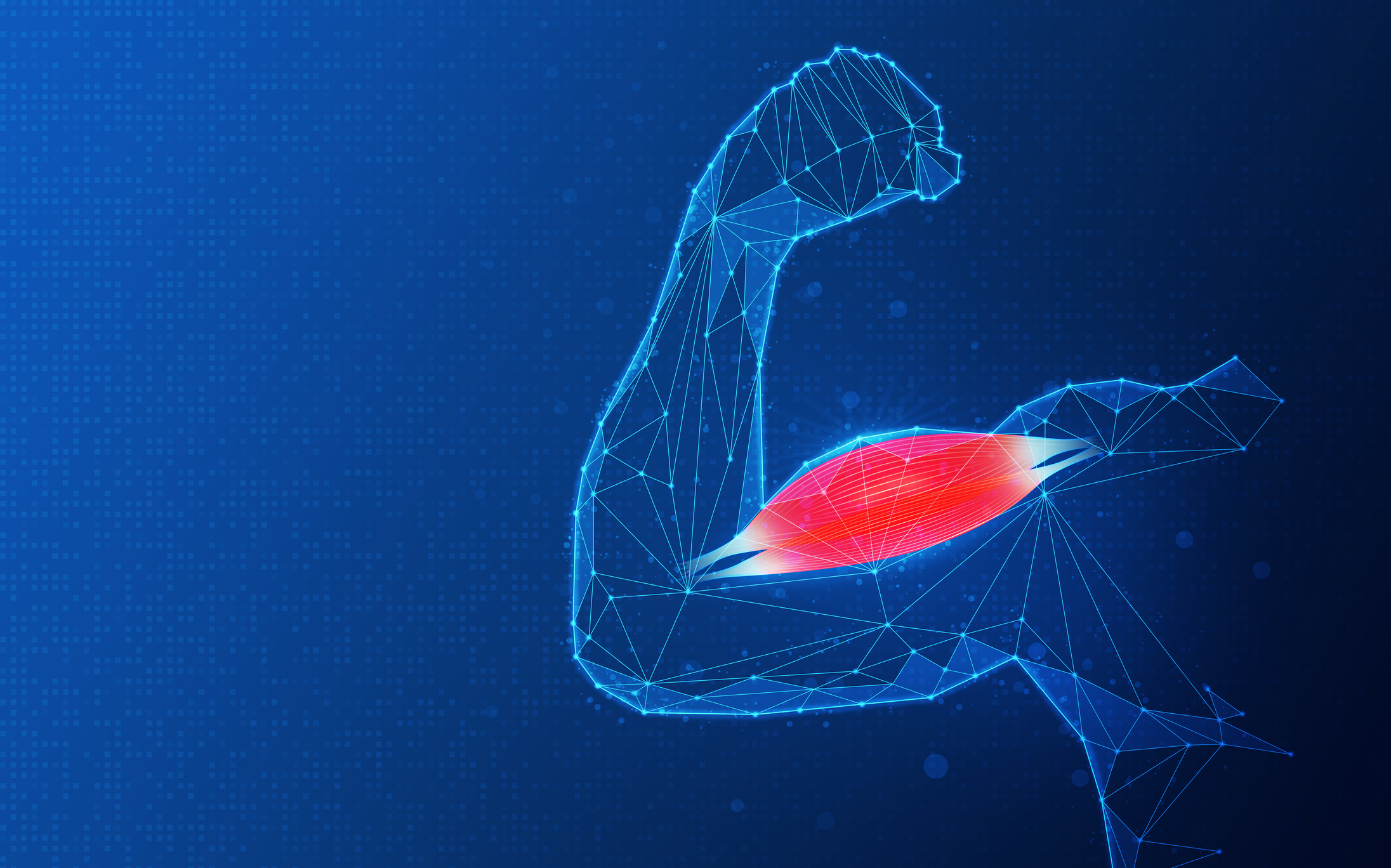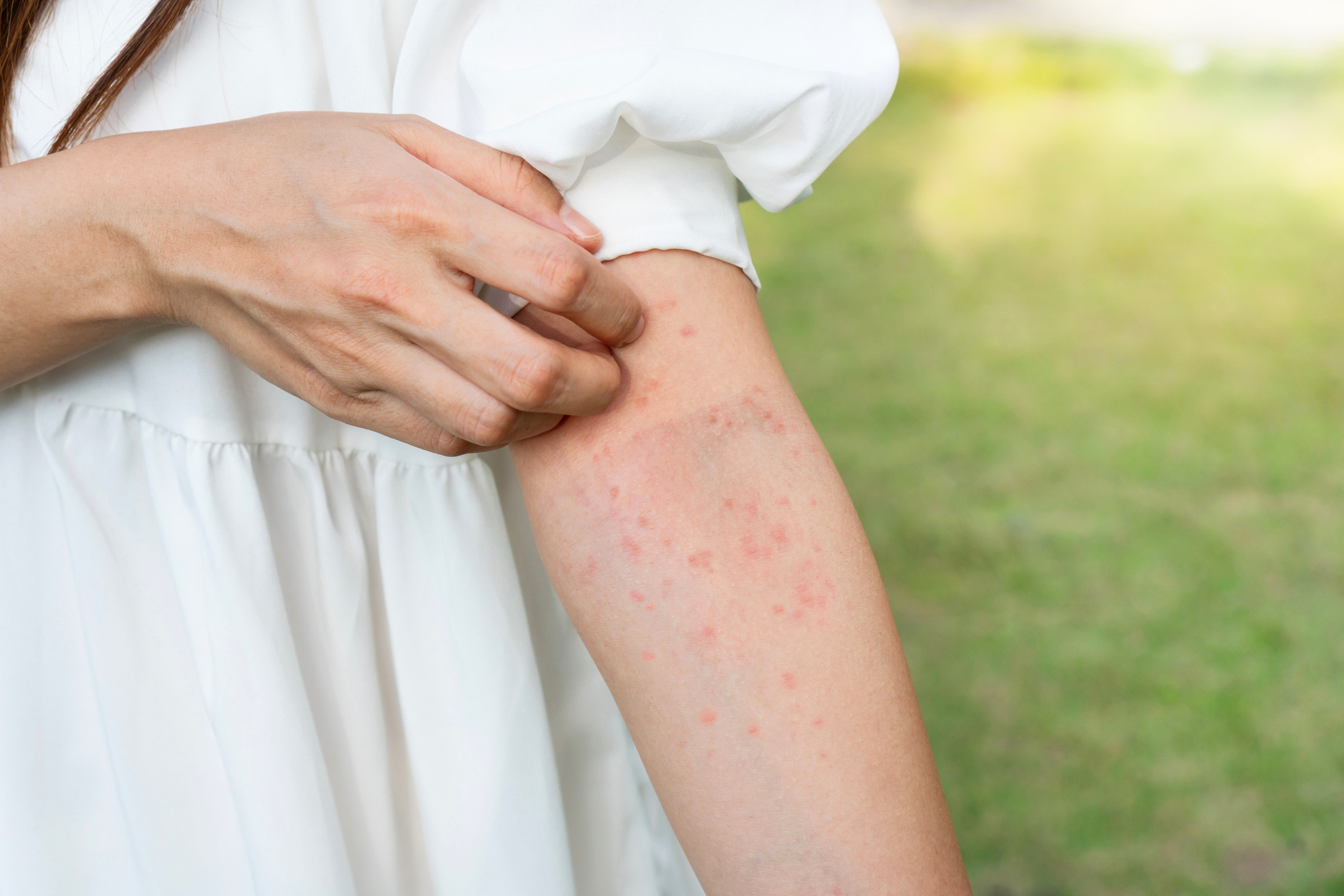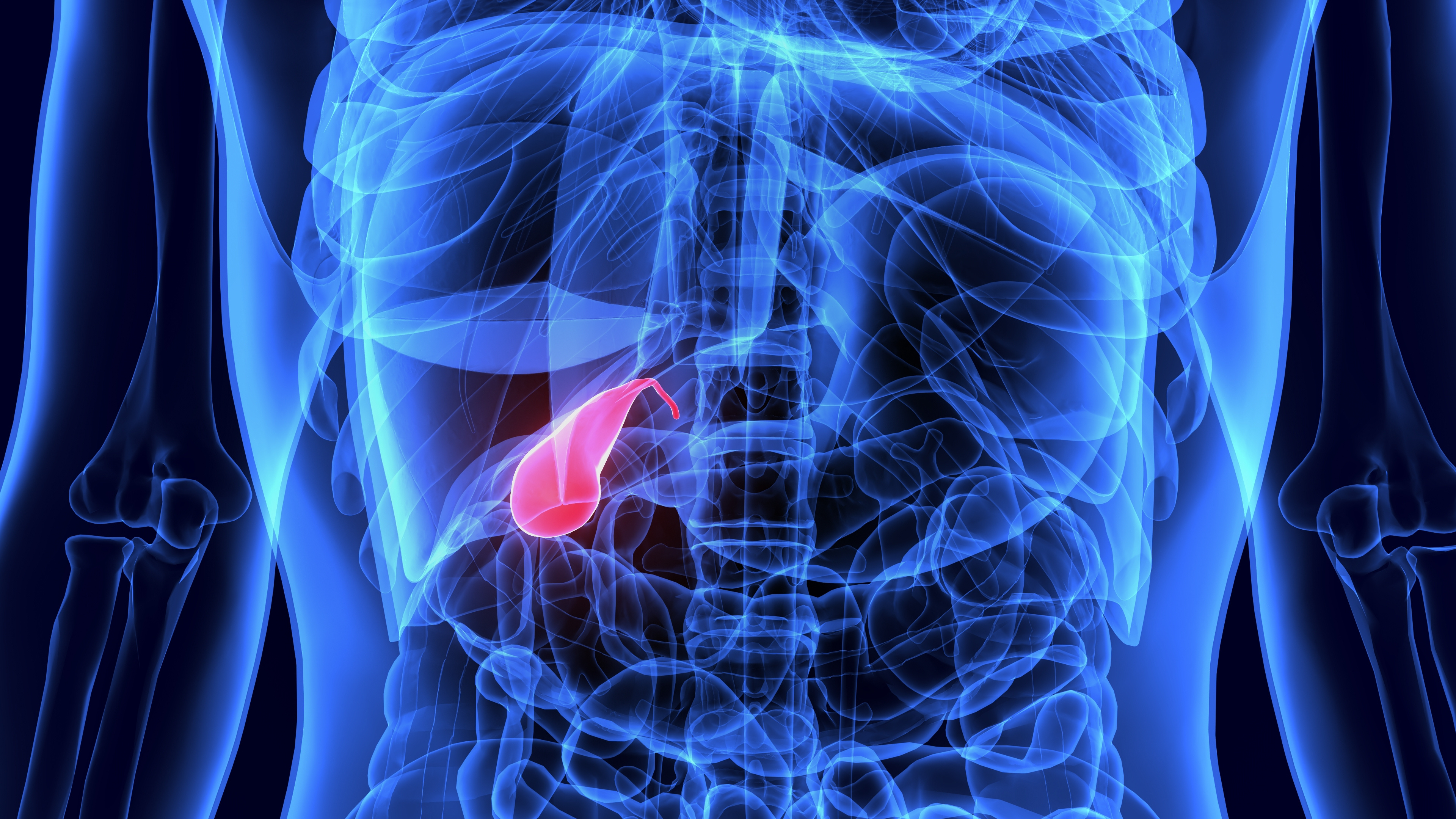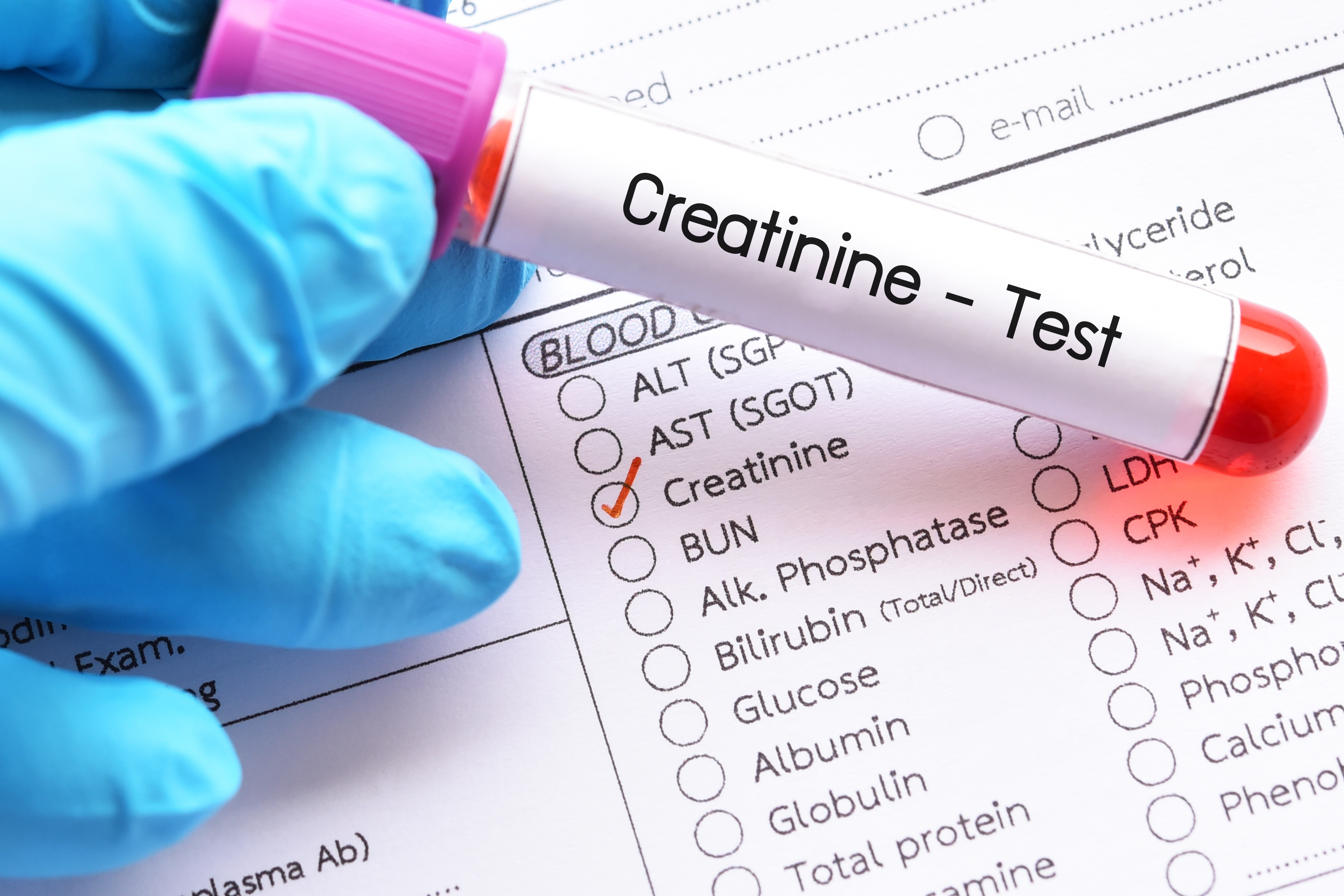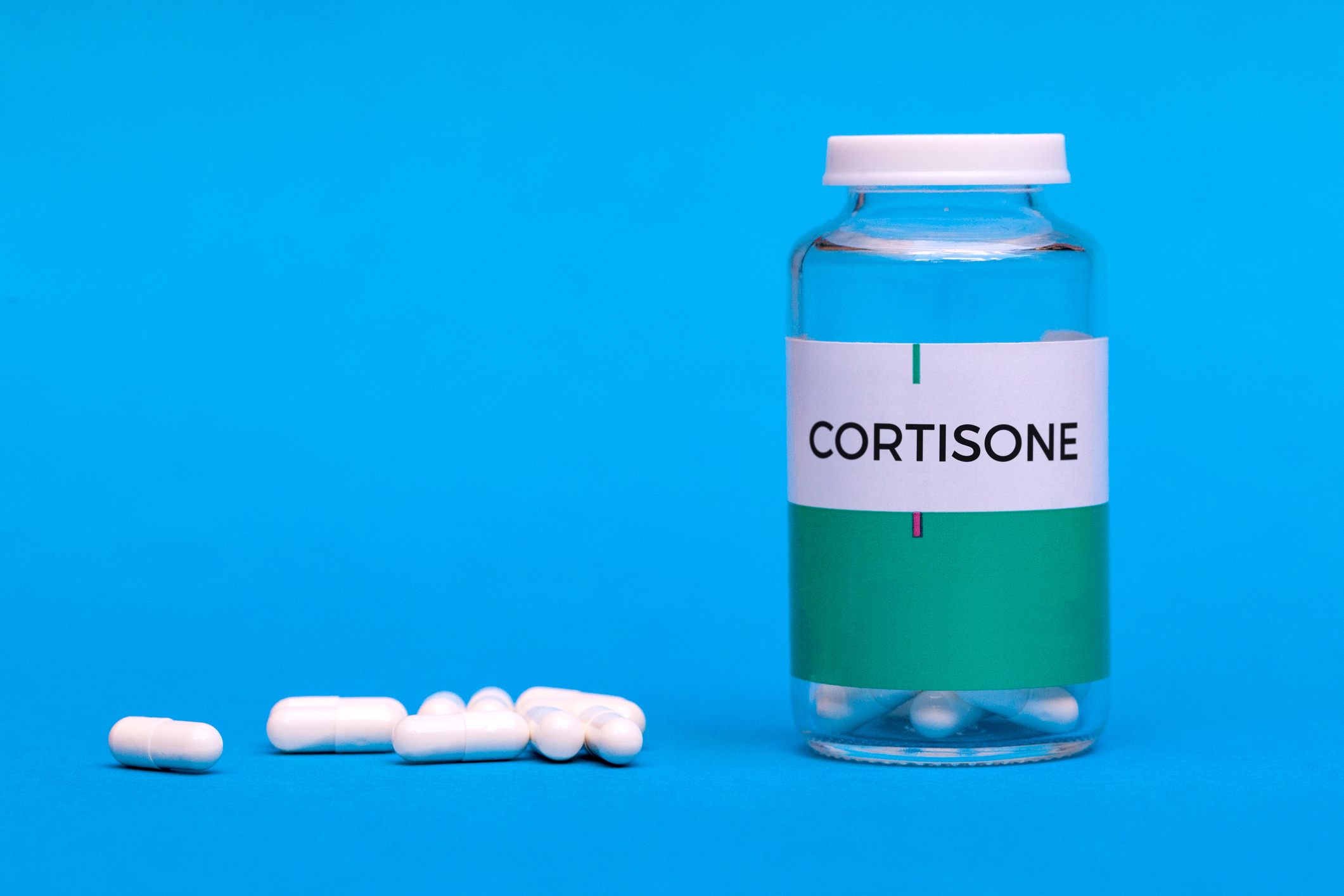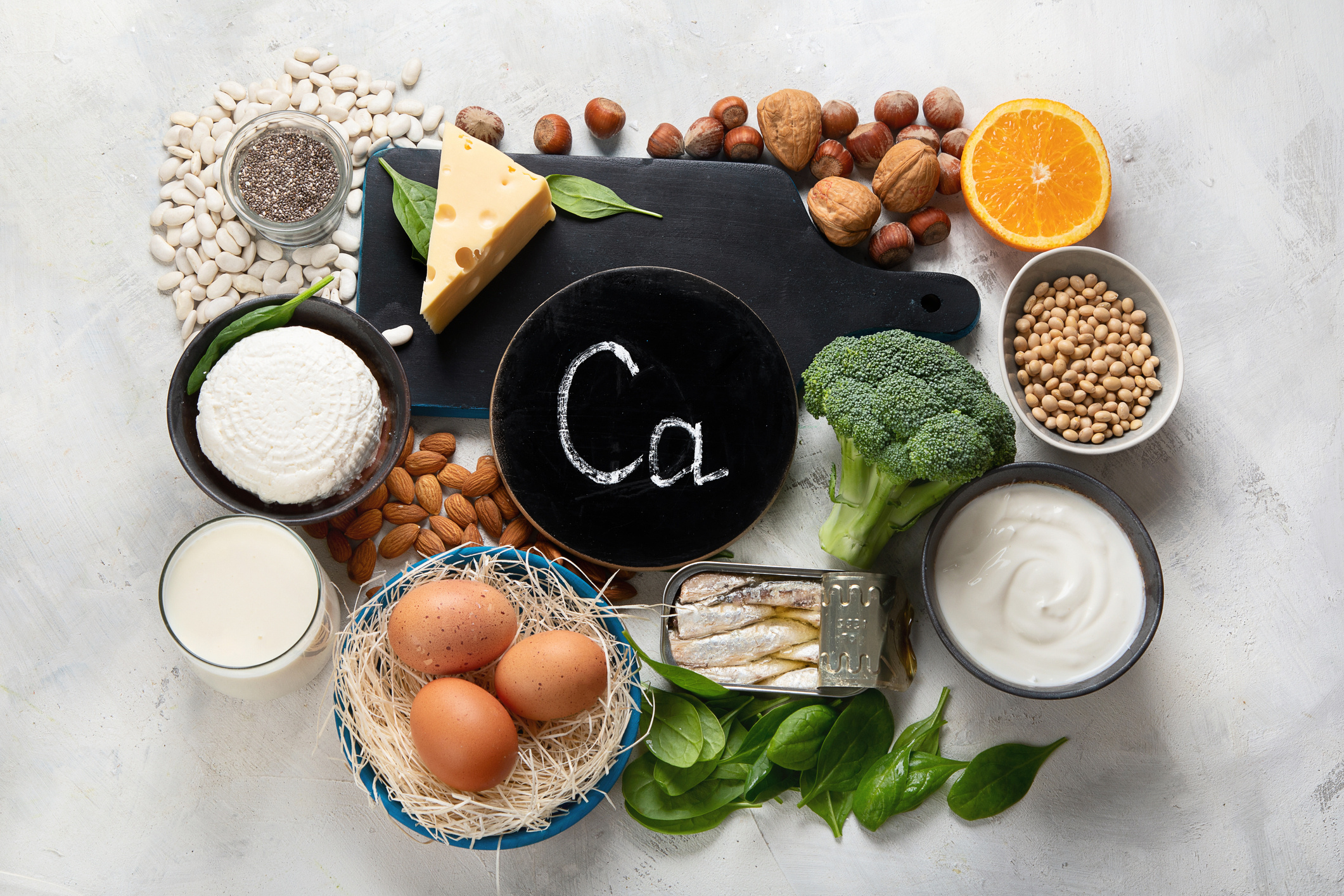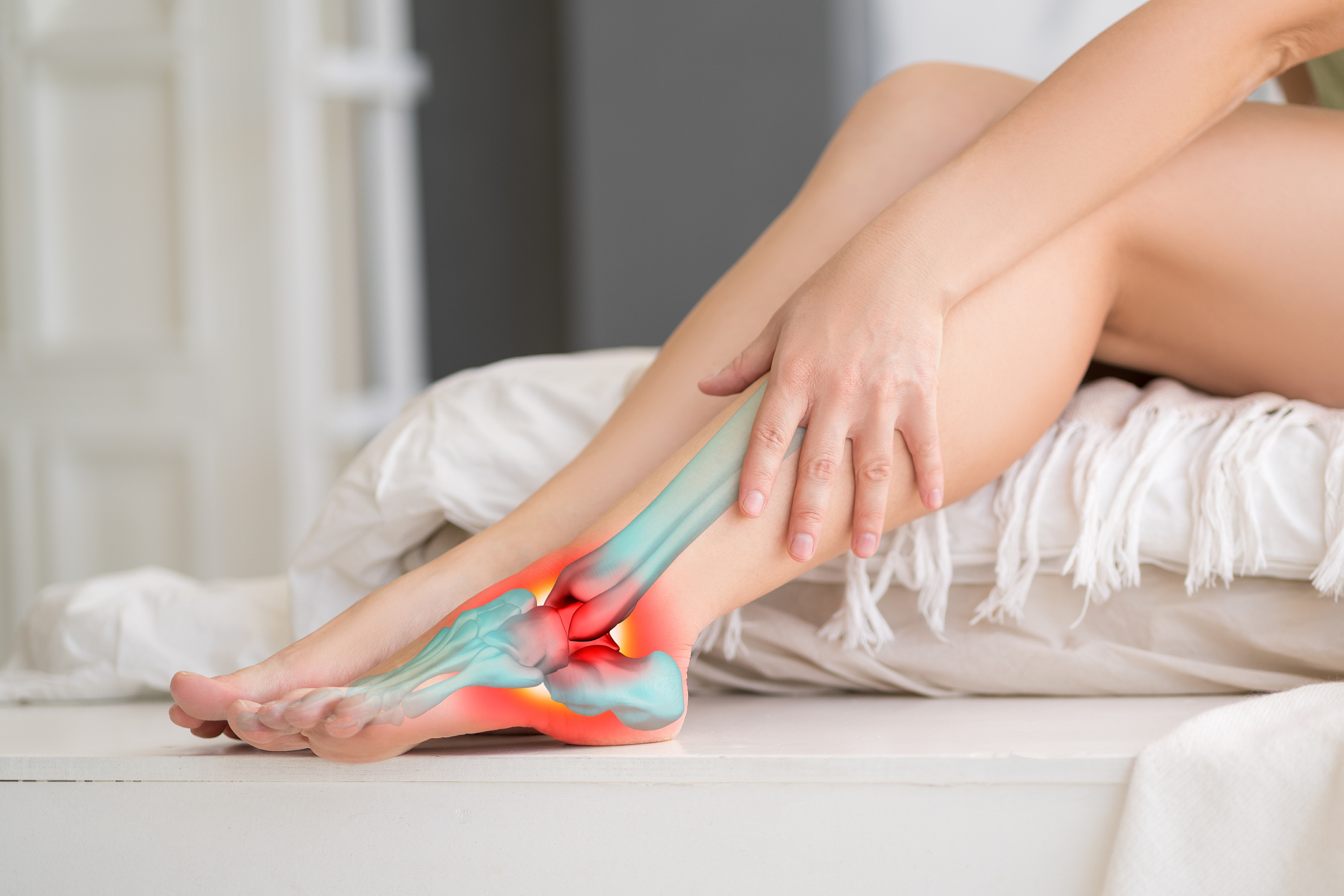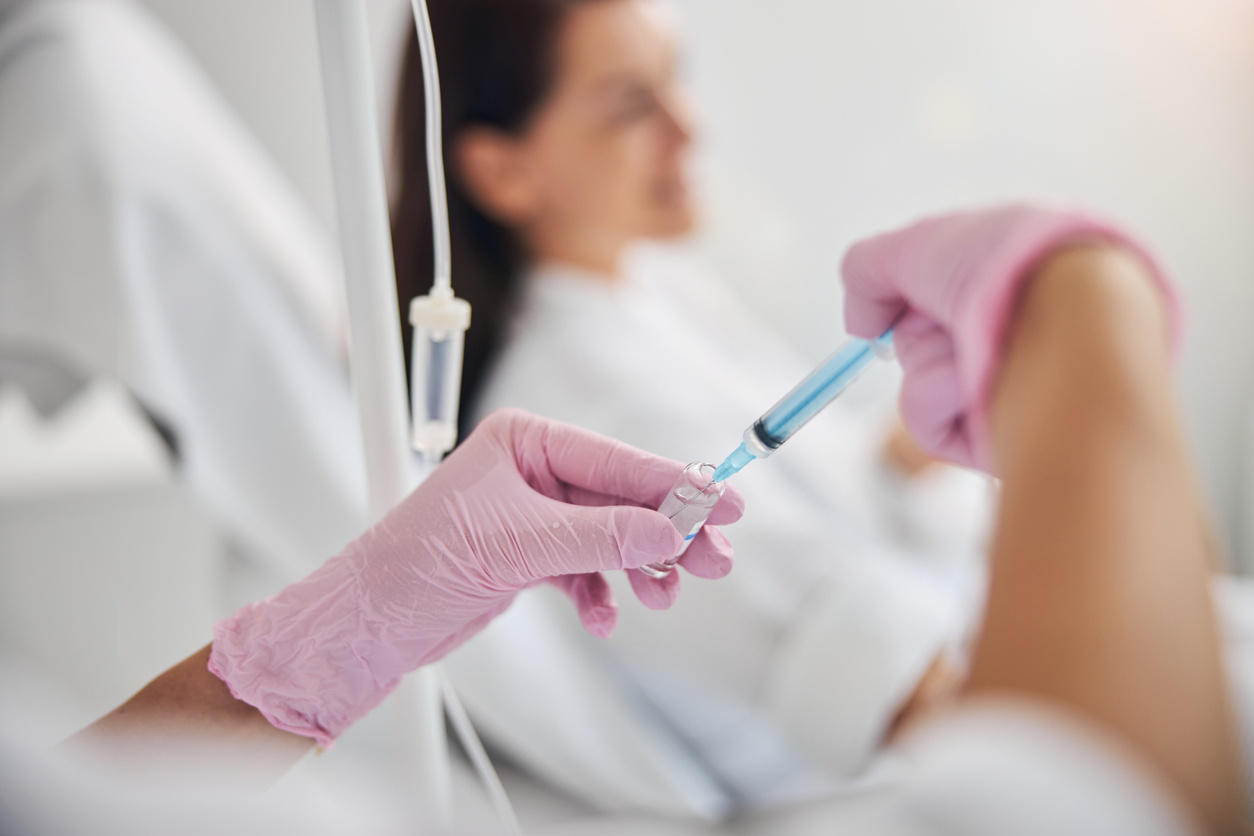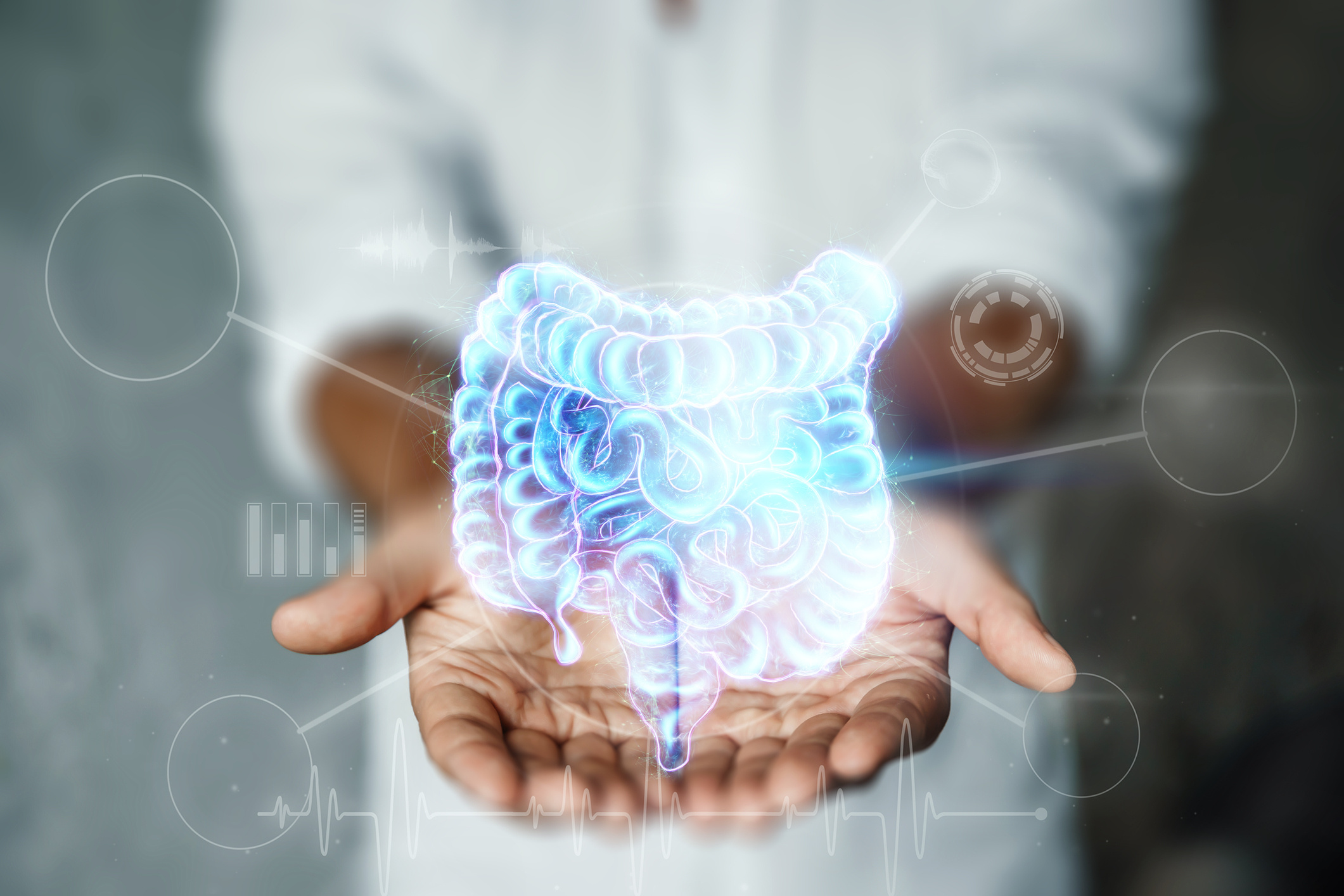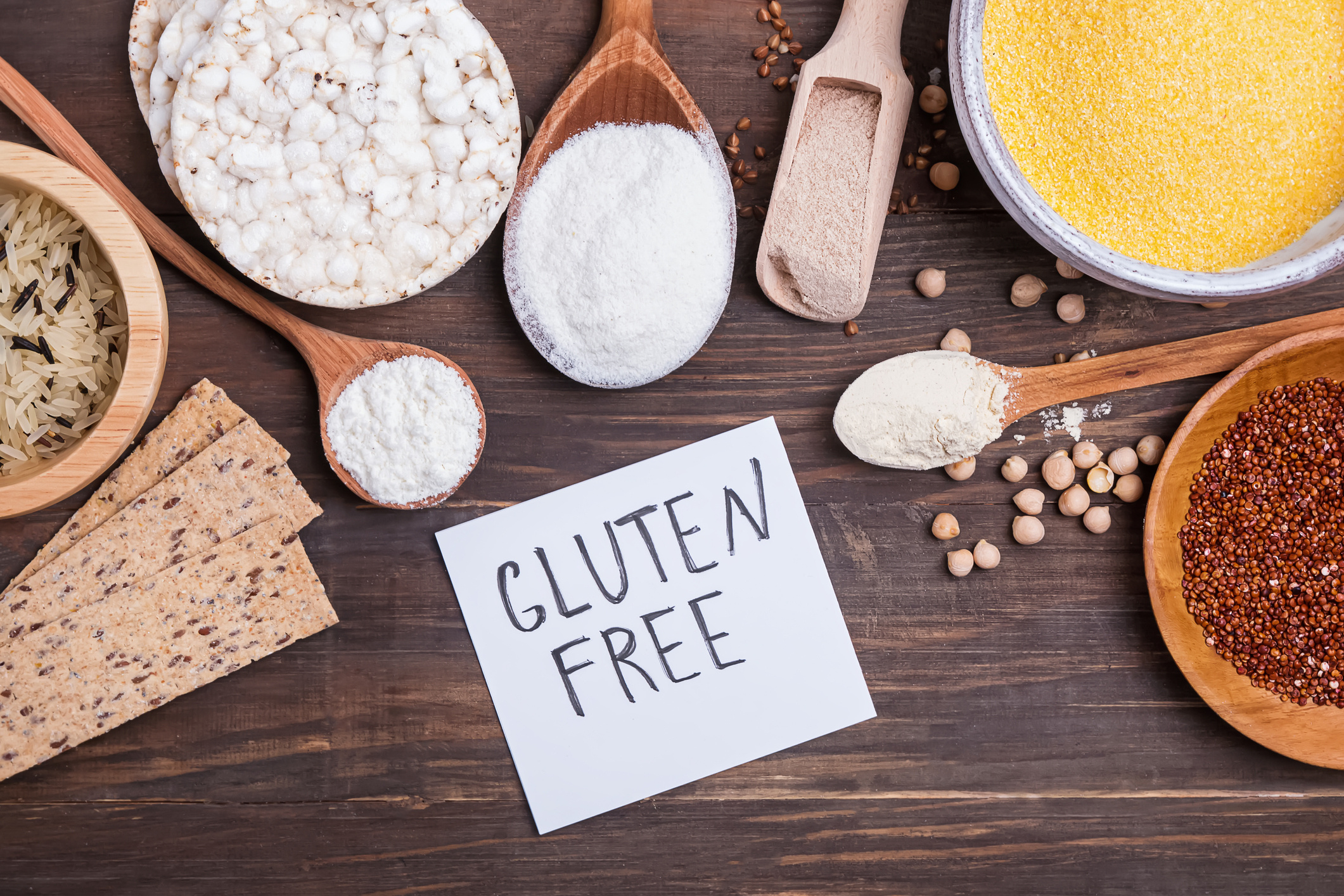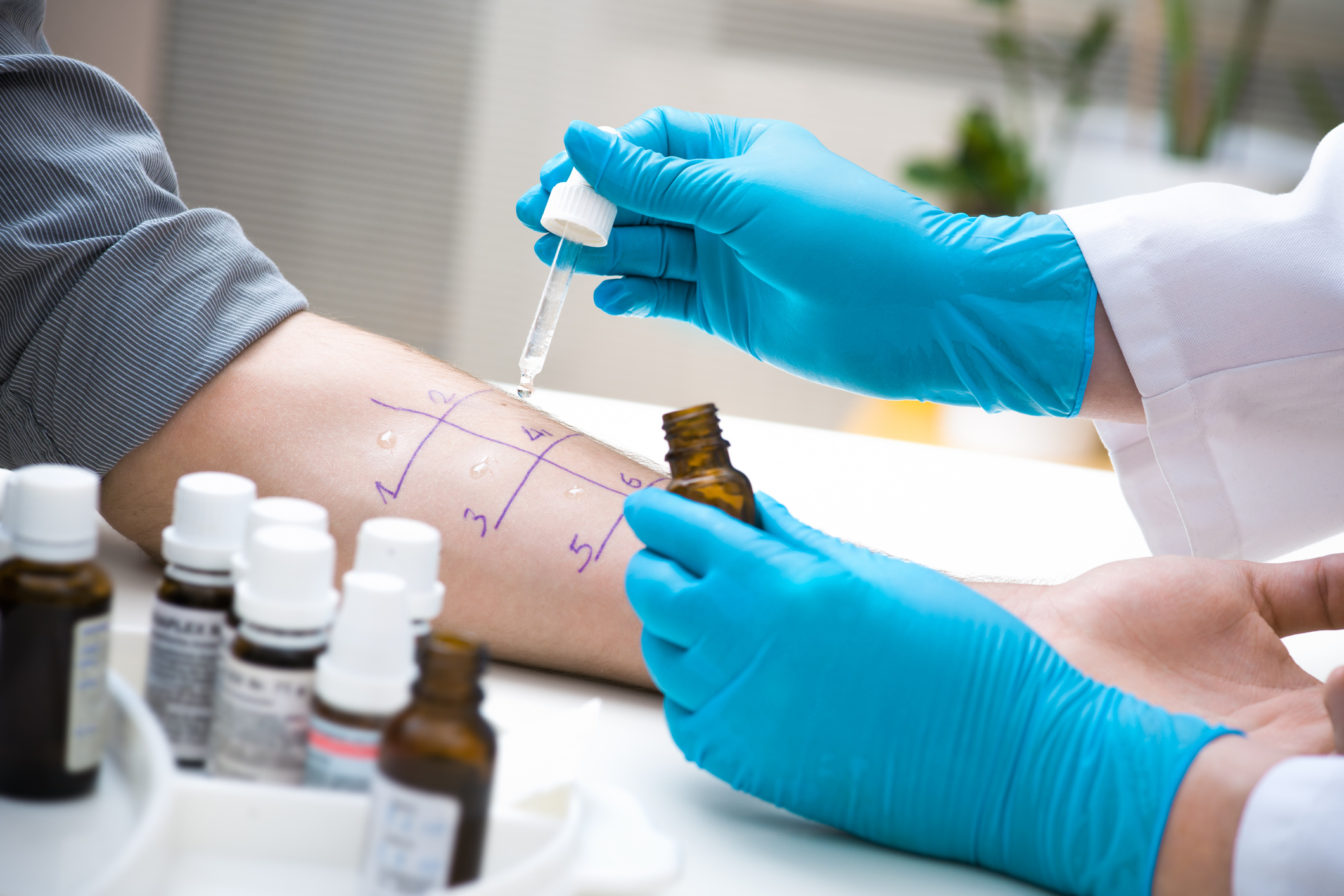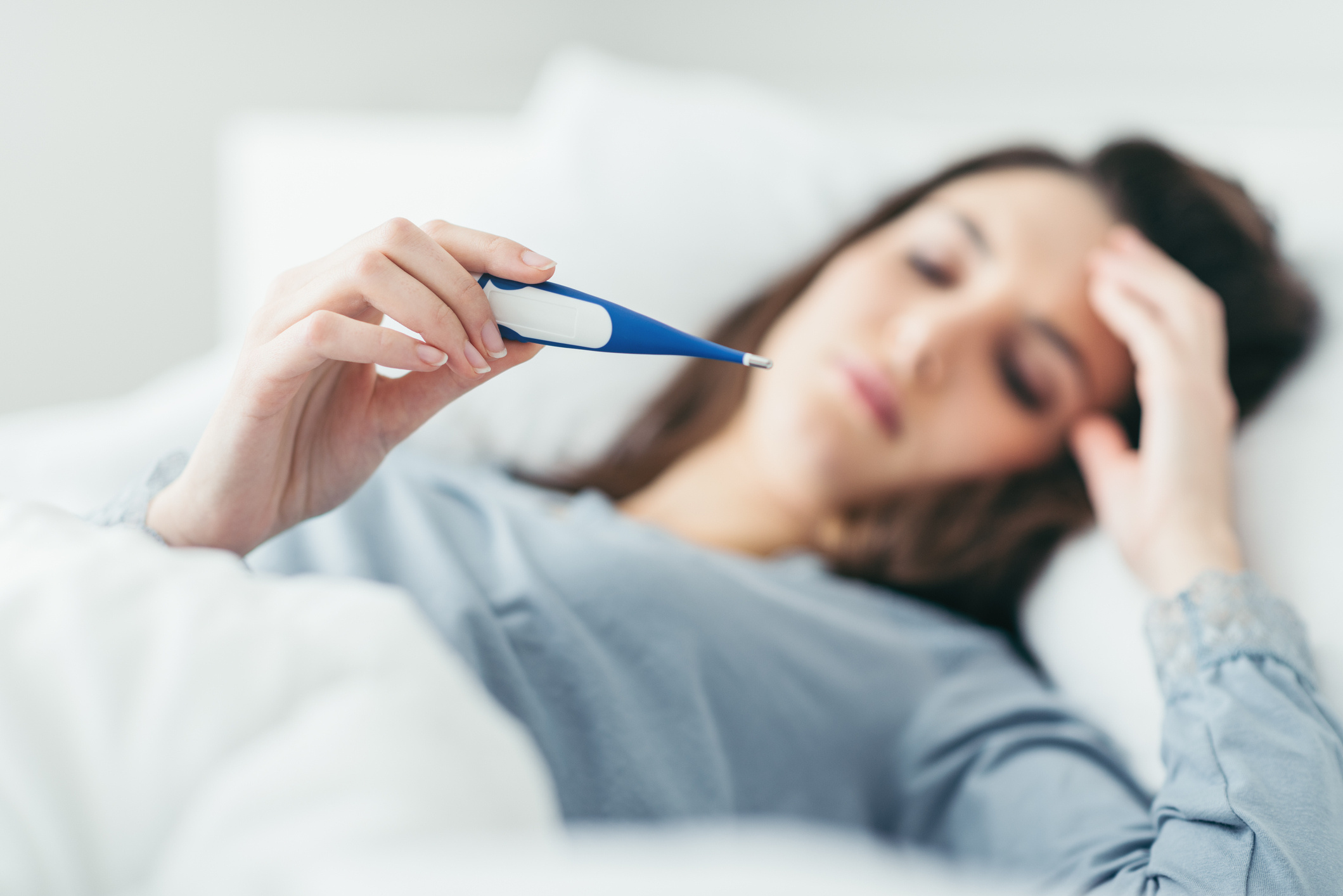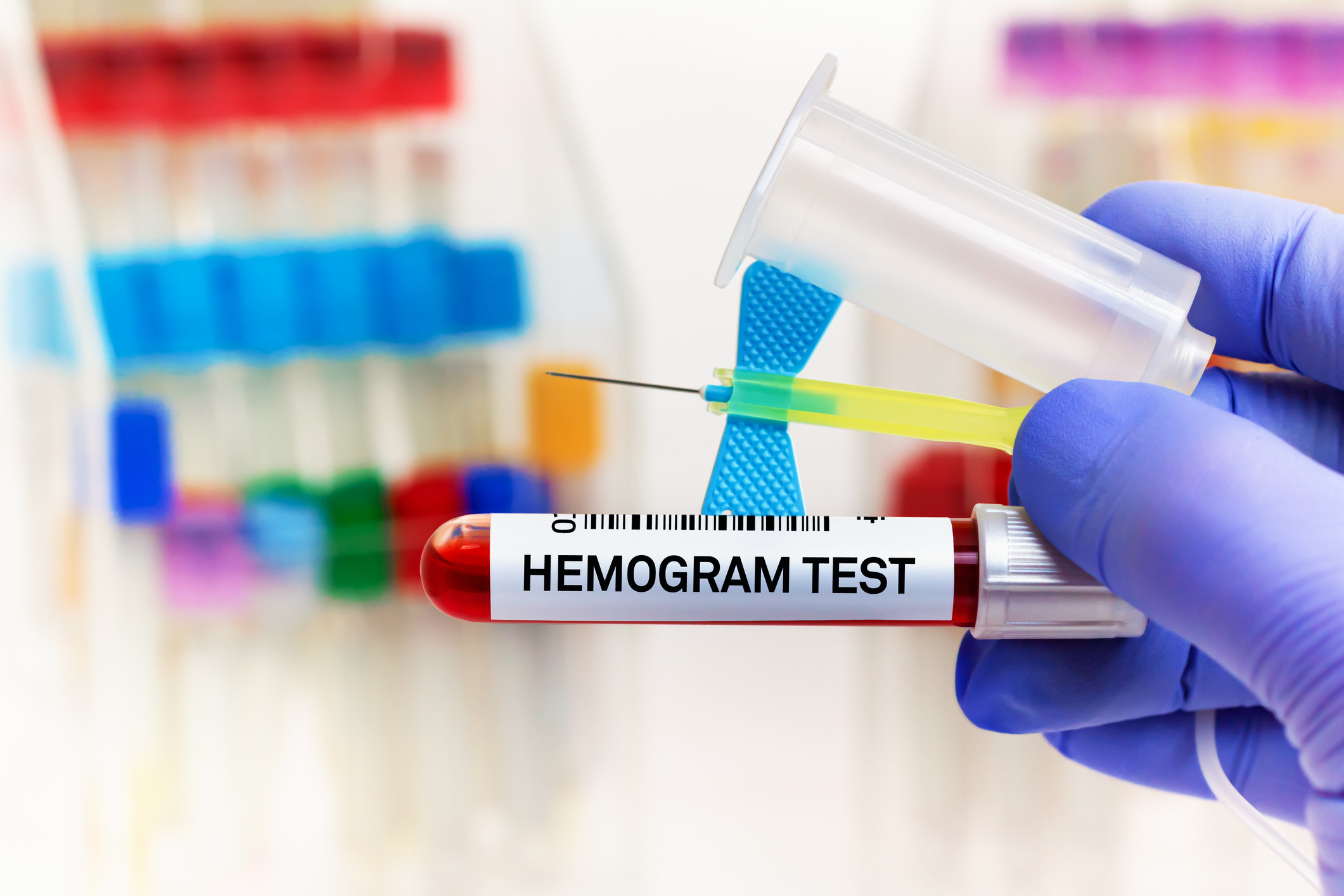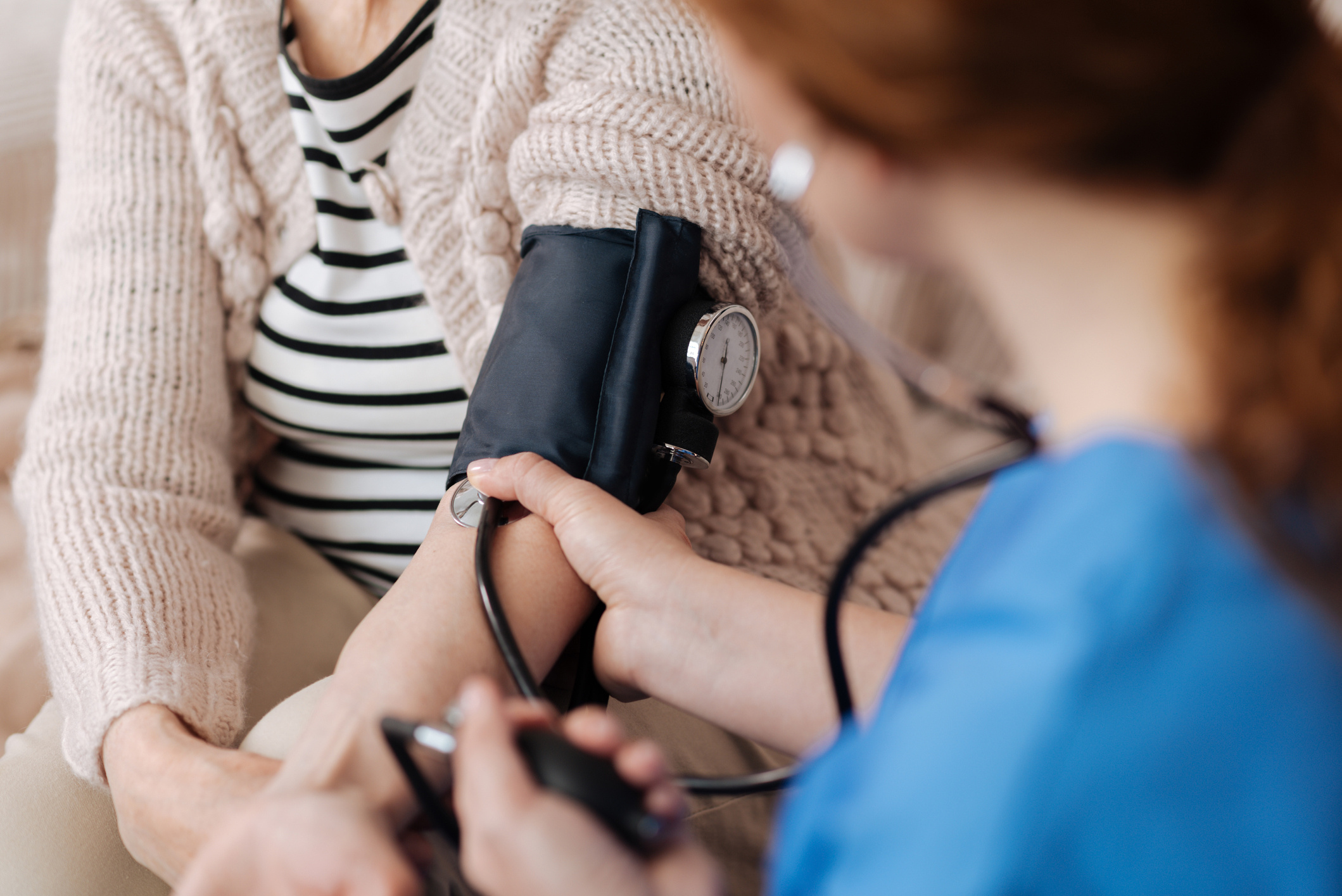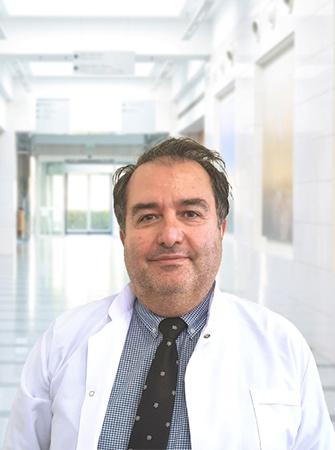
Cihan Top
He has been working as an internal medicine specialist at Anadolu Medical Center since 2021.
Speciality
- Hypertension
- Hyperlipidemia
- Obesity
- Endocrine diseases (Diabetes
- Thyroid
- Insulin resistance
- Etc.)
- Rheumatic diseases
- Digestive system disorders
- Liver-gallbladder diseases
- Renal diseases
- Muscular-connective tissue and joint diseases
- Heart and respiratory failure
- Respiratory tract infections (upper and lower respiratory tract infections- covid-19 inf.-pneumonia (pneumonia))
- Critically old patient follow-up treatment-Nutrition
- Follow-up-treatment of patients with malnutrition (enteral and parenteral nutrition)
- Fluid-electrolyte balance disorders
- Intensive care patient (multiple organ failure)
- Respiratory support in the intensive care unit (invasive and non-invasive mechanical ventilation)
- Blood diseases (Anemia
- Etc.)
- Diagnosis and follow-up of oncological patients
- CHECK-UP scan programs
Education
University
GATA Faculty of Medicine, Ankara, 1990
Specialty
GATA Department of Internal Diseases, Internal Diseases Specialization Training, Ankara, 1997
TR Ministry of Health Expertise Board, Intensive Care Expertise, 2013
Institutions Worked At
Prof. Dr. Cihan Top was granted the title of associate professor in 2003 and the title of professor in 2009. He has been working full-time as an internal medicine specialist at Anadolu Health Ataşehir Medical Center since 2021. He served as a faculty member (GATA Retired Lecturer) for 17 years, Assistant Professor (5 years), Assoc. (6 years), Prof. (6 years).
- Turkish Internal Medicine Specialist Association
- Turkish Intensive Care Society
- Turkish Diabetes Association
- Turkish Obesity Research Society
He participated in a great deal of national and international scientific congresses as session chair, speaker, oral presentation and poster. He has attended courses abroad on rheumatic diseases and intensive care.
1A- SCI Expanded (Science Citiation Index-expanded ), SSCI (Social Science Citiation Index ) ve AHCI ( Arts and Humanities Citiation Index) tarafından taranan dergilerde yayımlanan araştırma ve derlemeler
1. Us M.H., Özkan S., Oral L., Oğuş T., Acar H.V., Çakır O., Keskin Ö., Top C., Gökben M.: Comparison of the effects of hypertonic saline and crystalloid infusions on haemorrhagic shock in dogs. J. Int. Med. Res. 29, 508-515 (2001).
2. Top C., Cingözbay B.Y., Terekeci H., Küçükardalı Y., Önde M.E., Danacı M.: The effects of valsartan on insulin sensitivity in patients with primary hypertension. J. Int. Med. Res. 30, 15-20 (2002).
3. Cingözbay B.Y., Top C., Terekeci H., Keskin Ö., Önde M.E.: The effects of fluvastatin on insulin sensitivity in patients with primary hyperlipidamia. The Journal of International Medical Research 30, 21-25 (2002).
4. Öncül O., Top C., Özkan S., Çavuşlu S., Danacı M.: The serum interleukin 2 levels in patients with rheumatoid arthritis and correlation with insülin sensitivity. J. Int. Med. Res. 30: 386-390 (2002).
5. Ebrinç S., Top C., Öncül O.,Başoğlu C., Çavuşlu S., Çetin M.: The serum interleukin 1-alpha and interleukin 2 levels in patients with Schizophrenia. J. Int. Med. Res. 30: 314-317 (2002).
6. Öncül O., Keskin Ö., Küçükardalı Y., Evrenkaya R., Atasoyu M., Top C., Nalbant S., Özkan S., Emektaş G., Çavuşlu S., Us M.H., Pasha A, Gökben M.: Hospital acquired infections following the 1999 Marmara earthquake. J. Hosp. Infect. 51: 47-51 (2002).
7. Nalbant S, Koc B, Top C, Kucukardali Y, Baykal Y, Danaci M, Kocer IH. Hypersensitivity vasculitis and cytokines. Rheumatol. Int. 22(6): 244-248 (2002).
8. Küçükardalı Y., Cinan U., Acar H.V., Özkan S., Top C., Nalbant S., Çermik H., Çankır Z., Danacı M.: Comparison of the therapeutic efficacy of 4-methylpyrazole and N-Acetylcysteine on asetaminophen (paracetamol) hepatotoxicity in rats. Curr. Med. Res. Opin. 18(2), 78-81 (2002).
9. Karadayı K, Top C, Gülecek O. The relationship between soluble L-selectin and the development of diabetic retinopathy. Ocular Immunology and Inflammation II(2), 123-129 (2003)
10. Erşanlı D, Karadayı K, Toyran S, Akın T, Sönmez M, Çiftçi F, Top C, Elbüken E. The efficacy of hyperbaric oxygen for the treatment of experimental uveitis induced in rabbits. Ocul Immunol Inflamm 13(5): 383-388 (2005).
11. Karadayı K, Akın T, Çiftçi F, Top C, Keskin O, Kardeşoğlu E, Bilge AH. The association between hypermetropia and essential hypertension. Am J Ophthalmol 140(3): 446-453 (2005).
12. Öncül O, Yıldız S, Gürer US, Yeniz E, Üredi T, Top C, Göçer P, Akarsu B, Çevikbaş A, Çavuşlu Ş. Effect of the function of polymorphonuclear leukocytes and interleukin-1 beta on wound healing in patients with diabetic foot infections. J Infect 54: 250-256 (2007)
13. Erşanlı D, Top C, Öncül O, Terekeci H. The relationship between the serum soluble E-selectin levels and development of diabetic retinopathy in patients with type 2 diabetes. Scand J Clin Lab Invest 67: 474-479 (2007)
14. Uzun G, Solmazgül E, Curuksulu H, Turhan V, Ardıc N, Top C, Yıldız Ş, Cimsit M. Procalcitonin as a diagnostic aid in diabetic foot infections. Tohoku J Exp Med 213: 305-312 (2007).
15. Top C, Yıldız Ş, Öncül O, Qydedi T, Çevikbaş A, Soyoğul UG, Çavuşlu Ş. Phagocytic activity of neutrophils improves over the course of therapy of diabetic foot infections. J Infect 55: 369-373 (2007).
16. Top C, Şahan B, Önde ME. The relationship between left ventricular mass index and insulin sensitivity, postprandial glycaemia, and fasting serum triglyceride and adiponectin levels in patients with type 2 diabetes. J. Int. Med. Res. 35: 909-916 (2007).
17. Öncül O, Erenoğlu C, Top C, Küçükardalı Y, Karabudak O, Kurt Y, Akın ML, Çavuşlu Ş, Çelenk T. Necrotizing fasciitis: a life-threatening clinical disorder in uncontrolled type 2 diabetic patients. Diabetes Research and Clinical Practice 80: 218-223 (2008).
18. Erenoğlu C, Uluutku AH, Top C, Akın ML, Çelenk T. Do MRI agents cause or worsen acute pancreatitis? Turkish Journal of Trauma, Emergency Surgery 13 (1): 78-79 (2007).
19. Uzun G, Solmazgul E, Curuksulu H, Turhan V, Ardic N, Top C, Yildiz S, Cimsit M. Procalcitonin as a diagnostic aid in diabetic foot infections. Tohoku J Exp Med. 213(4):305-312 (2007)
20. Erikci AA, Ozturk A, Karagoz B, Bilgi O, Turken O, Top C, Kandemir EG. Results of combination therapy with amifostine, pentoxifylline, ciprofloxacin and dexamethasone in patients with myelodysplastic syndrome and acute myeloid leukemia. Hematology. 13(5):289-292 (2008).
21. Terekeci HM, Oktenli C, Ozgurtas T, Nalbant S, Top C, Celik S, Tapan S, Kucukardali Y, Sanisoglu YS, Solmazgul E, Sahan B, Sayan O. Increased asymmetric dimethylarginine levels in young men with familial Mediterranean fever (FMF): is it early evidence of interaction between inflammation and endothelial dysfunction in FMF? J Rheumatol. 35(10):2024-2029 (2008).
22. Onem Y, Kucukardali Y, Sahan B, Atasoyu EM, Ipcioğlu O, Terekeci H, Solmazgul E, Top C, Oktenli C. Analyses of subjects with hypokalemic metabolic alkolosis, Gitelman's and Bartter's syndrome. Ren Fail. 30(7):691-694 (2008).
23. Terekeci H, Kucukardali Y, Top C, Onem Y, Celik S, Oktenli C. Risk assessment study of the pressure ulcers in intensive care unit patients. Eur J Intern Med. 20(4):394-397 (2009).
24. Terekeci HM, Senol MG, Top C, Sahan B, Celik S, Sayan O, Kucukardali Y, Ipcioglu O, Cagiltay E, Oktenli C, Ozata M. Plasma osteoprotegerin concentrations in type 2 diabetic patients and its association with neuropathy. Exp Clin Endocrinol Diabetes.117(3):119-123 (2009).
25. Celik S, Erikci AA, Tunca Y, Sayan O, Terekeci HM, Umur EE, Torun D, Tangi F, Top C, Oktenli C. The rate of MEFV gene mutations in hematolymphoid neoplasms. Int J Immunogenet. 37(5):387-391 (2010).
26. Terekeci HM, Kucukardali Y, Onem Y, Erikci AA, Kucukardali B, Sahan B, Sayan O, Celik S, Gulec M, Sanisoglu YS, Nalbant S, Top C, Oktenli C. Relationship between anaemia and cognitive functions in elderly people. Eur J Intern Med. 21(2):87-90 (2010).
27. Onem Y, Terekeci H, Kucukardali Y, Sahan B, Solmazgül E, Senol MG, Nalbant S, Sayan O, Top C, Oktenli C. Albumin, hemoglobin, body mass index, cognitive and functional performance in elderly persons living in nursing homes. Arch Gerontol Geriatr. 50(1):56-59 (2010).
28. Umur EE, Oktenli C, Celik S, Tangi F, Sayan O, Sanisoglu YS, Ipcioglu O, Terekeci HM, Top C, Nalbant S, Kucukardali Y. Increased iron and oxidative stress are separately related to cognitive decline in elderly. Geriatr Gerontol Int. 11(4):504-509 (2011).
29. Ozari HO, Oktenli C, Celik S, Tangi F, Ipcioglu O, Terekeci HM, Top C, Uzun M, Sanisoglu YS, Nalbant S. Are increased carotid artery pulsatility and resistance indexes early signs of vascular abnormalities in young obese males? J Clin Ultrasound 40(6):335-340 (2012).
30. Çetinkaya H, Karagöz B, Bilgi O, Özgün A, Tunçel T, Emirzeoğlu L, Top C, Kandemir EG: Nesfatin-1 in advanced lung cancer patients with weight loss. Regulatory peptides 181:1-3 (2013)
31. Çelik S, Tangı F, Kılıçaslan E, Sanişoğlu YS, Öktenli Ç, Top C. Increased acylation stimulating protein levels in young obese males is correlated with systemic markers of oxidative stres. Obesity(Silver Spring) 21(8):1613-7 (2013)
1B- SCI Expanded (Science Citiation Index-expanded ), SSCI (Social Science Citiation Index ) ve AHCI ( Arts and Humanities Citiation Index) tarafından taranan dergilerde yayımlanan teknik not, editöre mektup, tartışma, vak’a takdimi, literatür review, klinik tarama vb. özet türünden yayınlar
1. Top C., Çankır Z., Şilit E., Yıldırım Ş., Danacı M.: Mönckeberg’s sclerosis. An unusual presantation. Angiology 53(4): 483-486 (2002).
2. Öncül O.,Top C., Çavuşlu S.: Corelation of serum leptin levels with insulin sensitivity in patients with chronic hepatitis C infection. Diabetes Care 25(5), 937 (2002).
3. Öncül O, Top C, Çavuşlu S. Response to Fukuki et al. Diabetes Care 25(10): 1901-1902 (2002).
4. Nalbant S, Aktay D, Top C, Kucukardali Y, Danacı M. Homocysteine and Behcet's Disease. J Clin. Rheumatol. 9(1): 65-66 (2003).
Karadayı K, Akın T, Çiftçi F, Top C, Keskin O, Kardeşoğlu E, Bilge AH. Hypermetropia is not associated with hypertension: the Blue Mountains Eye Study. Am J Ophthalmol 142(2): 359-360; author reply 360-361 (2006).
2A- Madde 1.1’de sayılan indeksler dışındaki uluslar arası indeksler tarafından taranan dergilerde yayımlanan araştırma ve derlemeler
1. Küçükardalı Y, Çankır Z, Özkan S, Turken O,Top C, Cakır O, Gokben M, Danacı M: Oncologic emergencies that need supportive care in ICU. Internet Journal of Oncology. 2002. Volume 1, Number 2.
2B- Madde 1.1’de sayılan indeksler dışındaki uluslar arası indeksler tarafından taranan dergilerde yayımlanan teknik not, editöre mektup, tartışma, vak’a takdimi ve özet türünden yayınlar ile indekslere dahil olmayan Yurtdışı dergilerde yayınlanan makale ve olgu sunumları, literatür review, klinik tarama türünden yayınlar
1. Terekeci MH, Top C, Erikçi Akyol A, Şahan B, Yücetürk T. An uncommon presentation of venous thrombosis of upper extremity: protein C, S deficiency and factor V leiden mutation. Case Rep Clin Pract Rev 8: 236-238 (2007).
3A (1)- TUBİTAK Ulakbim Türk Tıp Dizini Kurulu tarafından indekslenen (listelenen) ulusal hakemli dergilerde yayımlanan araştırma makaleleri
1. Top C., Vural A., Ünal M.T., Doruk H., Sağlam K., Kocabalkan F.: Nefrotik sendromlu hastalarda kronik gastrit, helikobakter pilori prevalansı. GATA Bülteni 40(1), 62-69 (1998).
2. Doruk H., Ünal M.T., Turan M., Top C., Sağlam K., Kocabalkan F.: İnflamatuar artritlerde sinoviyal sıvıda eosinofil cationic protein (ECP) düzeyleri ve tanısal değeri. GATA Bülteni 40(1), 91-96 (1998).
3. Kandemir E.G., Türken O., Önde M.E., Yaylacı M., Çankır Z., Top C., Ünal M.T., Üskent N.: Sisplatine bağlı gecikmiş emezisin kontrolünde akut emezisin başarılı kontrolünün rolü ve dekzametazon ile ondansetron artı dekzametazonun karşılaştırılması. Gülhane Tıp Dergisi 41(3), 278-282 (1999).
4. Kandemir E.G., Akın L., Ünver S., Önde M.E., Türken O., Top C., Yıldırım Ş., Yaylacı M., Üskent N., Ünal M.T.: Erken evre meme kanserinde tümör dokusu ferritin düzeyinin prognostik önemi ve diğer prognostik faktörlerle ilişkisi. Gülhane Tıp Dergisi 41(3), 286-291 (1999).
5. Cingözbay B.Y., Özmen N., Top C., Us M.H., Cebeci B.S., Demiralp E.: Akut inferior miyokard infarktüsünde infarkttan sorumlu arteri elektrokardiyografik olarak tahmin edebilme. Anadolu Kardiyoloji Dergisi 1(3), 148-152 (2001).
6. Küçükardalı Y., Öncül O., Nalbant S., Çankır Z., Top C., Ağdaş Ş., Şilit E., Danacı M.: Yaşlı populasyonda toplum kökenli pnömoni olguları. Turkish Journal of Geriatrics 4(2), 59-62 (2001).
7. Nalbant S., Top C., Topallar F., Berdan E., Aslan E., Küçükardalı Y., Vural N., Danacı M.: Yoğun bakım hasta ilişkisi. Turkish Journal of Geriatrics 4(4), 135-140 (2001).
8. Nalbant S., Serdar M.A., Yönem A., Top C., Küçükardalı Y., Çankır Z., Çekem K., Danacı M.: Diabetik ayak hastalarında lipid profilinin Wagner sınıflaması ile korelasyonunun araştırılması. Endokrinolojide Yönelişler 11(1), 29-32 (2002).
9. Önde M.E., Top C., Tor H. Normoglisemik obez hastalarda hipofiz-adrenal aks aktivasyonu, insülin direnci ve beta-hücre indeksi ile ilişkisi. Endokrinolojide Yönelişler 11(3), 108-110 (2002).
10. Top C, Tuncel A., Keskin Ö., Önde M.E.: Romatoid artritli hastalarda akut insülin cevabı değişiklikleri. Göztepe Tıp Dergisi 18: 166-167 (2003)
11. Top C, Cingözbay BY, Keskin Ö, Terekeci H, Önde ME. Normoglisemik obez hastalarda prolaktin ve insülin direnci ilişkisi. Uludağ Üniversitesi Tıp Fakültesi Dergisi 28(3): 85-87 (2002).
12. Top C, Cingözbay BY, Keskin Ö, Tuncel A, Önde ME. Romatoid artritli hastalarda serum interlökin 1alfa düzeyleri ile insülin direnci arasındaki ilişki. Uludağ Üniversitesi Tıp Fakültesi Dergisi 28(3): 81-84 (2002).
13. Küçükardalı Y, Yazgan Y, Çankır Z, Top C, Nalbant S, Berdan E, Keskin Ö, Danacı M. Geriatrik popülasyonda non-steroidal anti-inflamatuar ilaçlara bağlı olan ve olmayan üst gastrointestinal sistem kanamalı olguların karşılaştırılması. Turkish Journal of Geriatrics 5(3): 87-90 (2002).
14. Terekeci H, Top C, Önde ME. Normoglisemik obez olgularda hipofiz adrenal aks aktivasyonu ile insülin direnci, beta hücre indeksi ve serum leptin düzeyleri arasındaki ilişki. Endokrinolojide Yönelişler 12(2): 57-63 (2003).
15. Top C., Cesur H., Cingözbay B.Y., Cebeci B.S., Önde M.E., Tor H.: Tip 2 diyabetes mellituslu hastalarda makrovasküler komplikasyon gelişiminde enfeksiyöz ajanların rolü. Endokrinolojide Yönelişler 11(4): 149-154 (2002).
3A (2)- TUBİTAK Ulakbim Türk Tıp Dizini Kurulu tarafından indekslenmeyen (listelenmeyen) ulusal hakemli dergilerde yayımlanan araştırma makaleleri
1. Sağlam K., Mas M.R., Ateşkan Ü., Erdem H., Baykal Y., Top C., Kutlu M., Kocabalkan F.: Diabetik ketoasidozu presipite eden faktörler. Türk Diabet Yıllığı (Year Book of Turkish Diabetology, 1995-1996 ) : 159-164.
2. Çankır Z., Top C., Cingözbay B:Y:, Nalbant S., Silan B., Terekeci H., Önde M.E., Danacı M.: Normoglisemik obez hastalarda serum fibrinojen düzeyleri, insülin direnci ve beta-hücre indeksi ile ilişkisi. Hipokrat Kardiyoloji 3(18), 7-9 (2001).
3. Top C., Önde M.E.: Tip 2 diyabetik hipertansif hastalarda nefropati gelişimi ile insülin direnci, beta hücre indeksi arasındaki ilişki .Türk Diabet Yıllığı (Year Book of Turkish Diabetology, 2000-2001 ) 173-180 (2001).
4. Top C., Keskin Ö., Cingözbay B.Y., Nalbant S., Danacı M.: Tip 2 diyabetik hipertansif hastalarda QT dispersiyonu ile insülin direnci, beta hücre indeksi arasındaki ilişki. Hipokrat Kardiyoloji 3(21), 15-19 (2002).
5. Cingözbay B.Y., Top C., Kardeşoğlu E., Cebeci B.S., Dinçtürk M., Demiralp E.: Tip 2 diyabetik hastalarda QT dispersiyonu ile serum sL-selektin düzeyleri arasındaki ilişki. İstanbul Üniversitesi Kardiyoloji Enstitüsü Dergisi 1: 54-56 (2002).
6. Öncül O, Top C, Çavuşlu S. Tip 2 diyabet gelişiminde kronik HCV infeksiyonu için bir risk faktörü müdür? Viral Hepatit Dergisi 8(1): 436-440 (2002).
7. Kardeşoğlu E, Demiralp E, Cebeci BS, Özmen N, Çelik T, Top C, Cingözbay BY, Yalçın M. Hipertansif hastalarda sol ventrikül hipertrofisi gelişmesine leptin düzeylerinin etkisi. Nobel Med. 2(1): 10-14 (2006).
8. Terekeci MH, Top C, Demirci M, Önde ME. Tip 2 diyabetik hastalarda insülin direnci ile serum ekstrasellüler süperoksit dizmutaz aktivitesi, serum adiponektin ve hs-CRP düzeyleri arasındaki ilişki. Endokrinolojide Diyalog 2: 129-137 (2007).
9. Demirel F, Top C, Karagöz B, Terekeci H, Şahan B. Tip 2 diyabetik hastalarda cerrahi girişim sonrası nötrofil aktivasyon göstergeleri (CD11a, CD11b, CD62l, CD66b) ve srum nötrofil elastaz düzeylerindeki değişiklik, bunların operasyon öncesi metabolik kontrol parametreleriyle ilişkisi. Diabet Bilimi. 5(6):207-215 (2007).
3B- Yurtiçi hakemli dergilerde yayımlanan olgu sunumu, teknik not, klinik tarama, literatür review gibi yayınlar
1. Mas M.R., Top C., Erdem H., Koç B., Baykal Y., Nalbant S., Özotuk H., Sağlam K., Kocabalkan F.: Spontaneous bilateral rupture of kidneys in two patients with poliarteritis nodosa. Türkiye Klinikleri Tıp Bilimleri Dergisi 16(6) , 455-547 (1996).
2. Top C., Terekeci H.: Romatizmal hastalıklarda metotreksat kullanımı. İç Hastalıkları Progres 1(10), 319-322 (2000).
3. Top C., Cesur H., Danacı M.: Ateroskleroz ve enfeksiyöz ajanlar. Sendrom 13(9), 52-57 (2001).
4. Top C., Erikçi A., Nalbant S., Danacı M.: Serious lithium intoxication (case report). Gülhane Tıp Dergisi 43(1), 71-73 (2001).
5. Küçükardalı Y.,Nalbant S, Evrenkaya R., Özkan S., Çankır Z., Top C., Keskin Ö, Danacı M., Ebrinç S.: Zehirlenme olgularının analizi. Gülhane Tıp Dergisi 43(2), 181-185 (2001).
6. Küçükardalı Y., Nalbant S., Yazgan Y., Atasoyu E.M., Çankır Z., Top C., Keskin Ö., Naz A., Akyatan N., Danacı M.: Kaza ile oluşan oral cyclonit (RDX) toksisitesi : 5 olgu raporu. Gülhane Tıp Dergisi 43(3), 328-332 (2001).
7. Küçükardalı Y., Çankır Z., Ebrinç S., Nalbant S., Başoğlu C., Evrenkaya R., Top C., Danacı M.: Serotonin syndrome caused by moclobemide-clomipramine interaction. Klinik Psikofarmakoloji Bülteni 11(1), 33-36 (2001).
8. Küçükardalı Y., Koçak N., Yazıcı H., Çankır Z., Nalbant S., Top C., Danacı M.: Nedeni Bilinmeyen ateş: 82 olgu bildirisi. Flora 6(3), 171-177 (2001).
9. Top C., Cingözbay Y., Önde M.E.: Romatoid artrit ve insülin direnci ilişkisi. Folia (Hipertansiyon Diyabet, Ateroskleroz Dergisi) 2: 18-23 (2002).
10. Top C., Erikçi A., Danacı M.: Düşük doz metotreksat kullanımına bağlı pansitopeni. T Klin Gastroenterohepatoloji. 14: 93-95 (2003).
11. Cingözbay B.Y., Kardeşoğlu E., Top C.: Kardiyovasküler hastalıklarda sidenafil sitrat kullanımı. Sendrom 14(4): 120-124 (2002).
12. Keskin Ö., Kalemoğlu M., Top C.: Rabdomiyoliz. Sendrom 14(9): 81-88 (2002).
13. Top C., Danacı M.: İnsülin direnci ve tümör nekroze edici faktör alfa. Sendrom 14(7): 108-116 (2002).
14. Keskin Ö., Kalemoğlu M., Top C., Cingözbay Y.: Asemptomatik miyokart infarktüsü. Sendrom 14(12): 91-94 (2002).
15. Keskin Ö., Kalemoğlu M., Top C., Cingözbay Y. : Acil servis ve deprem planlaması. Sendrom 14(8): 53-57 (2002).
16. Keskin Ö., Kalemoğlu M., Top C. : Hipertansif Aciller. Sendrom 14(11): 30-36 (2002).
17. Keskin Ö., Kalemoğlu M., Us M.H., Özkan S., Top C., Pekedis A.: Aort disseksiyonu ve aortik anevrizma rüptürü. Haydarpaşa Kardiyoloji ve Kardiyovasküler Cerrahi Bülteni 10(1): 36-40 (2002).
18. Keskin Ö, Kalemoğlu M., Top C. : Deprem ve hasta profili. Göztepe Tıp Dergisi 17(2): 68-70 (2002).
19. Keskin Ö, Kalemoğlu M., Top C. : Deprem ve asinobakter enfeksiyonu. Göztepe Tıp Dergisi 17(3): 132-134 (2002).
20. Top C, Önde ME. Obez olgularda hipofiz adrenal aks hiperaktivasyonu ve insülin direnciyle ilişkisi. Folia (Hipertansiyon Diyabet, Ateroskleroz Dergisi) 4: 25-31 (2002).
21. Top C, Önde ME. İnsülin direnci ölçüm yöntemleri. İç Hst. Progres Dergisi 3(10): 316-319 (2002).
22. Top C., Terekeci H., Yıldırım Ş., Danacı M.: Budd-Chiari Sendromu. Türkiye Klinikleri Gastroenterohepatoloji Dergisi 14: 41-44 (2003).
23. Keskin Ö, Kalemoğlu M., Top C. : Frontal sinüzit komplikasyonu olarak gelişen orbital sellülit ve subdural ampiyem. Göztepe Tıp Dergisi 18:58-60 (2003).
24. Top C., Çankır Z., Terekeci H., Şilit E., Yıldırım Ş., Karadayı K., Küçükardalı Y., Nalbant S., Danacı M., Unilateral complet renal artery occlusion due to polyarteritis nodosa. T Klin İmmünol Romatol 3: 78-81 (2003).
25. Top C. Vasküler endoteliyal büyüme faktörü (VEGF), anjiyogenez ve diyabetik retinopati. Folia (Hipertansiyon Diyabet, Ateroskleroz Dergisi) 4(2): 14-21 (2004).
26. Özmen N, Top C. Tip 2 diyabet ve koroner kalp hastalığı. Folia (Hipertansiyon Diyabet, Ateroskleroz Dergisi) 5(3): 25-27 (2005).
27. Keskin Ö, Top C. Acil serviste hipoglisemi. Folia (Hipertansiyon Diyabet, Ateroskleroz Dergisi) 5(3): 33-37 (2005).
28. Top C. Hipertansiyon tedavisinde ACE inhibitörleri ve AII antagonistleri. Hipokrat Dergisi 14(1): 27-30 (2005).
29. Top C. Diyabet (İnsülin direnci) ve hipertansiyon. Türk Kardiyoloji Seminerleri 5(2): 209-223 (2005).
30. Top C, Demirci M, Öncül O, Terekeci H. Tip 2 diyabette inflamasyon, adipoz doku ve adipositokinler. Folia (Hipertansiyon Diyabet, Ateroskleroz Dergisi) 6(4): 8-11 (2006).
31. Top C. Çocuk yaşı ve ergenlikte şişmanlık. Obezite 6(1): 10-11 (2006).
32. Terekeci MH, Top C, Şahan B, Önde ME. Adipositokinler. Folia (Hipertansiyon Diyabet, Ateroskleroz Dergisi) 5(2): 55-62 (2007).
33. Top C, Demirci M, Terekeci H. Tip 2 diyabette antioksidanlar, oksidatif stres ve endotel disfonksiyonu. Folia (Hipertansiyon Diyabet, Ateroskleroz Dergisi) 7(2): 12-16 (2007).
34. Terekeci H, Top C. Tip 2 diyabet ve ortalama trombosit hacmi değişiklikleri. Diabet Bilimi 5(5): 151-156 (2007).
35. Demirel F, Top C. Tip 2 diyabet, major cerrahi girişim ve enflamasyon. Diabet Bilimi 5(6): 202-206 (2007).
36. Terekeci MH, Şahan B, Top C. Hücre adezyon molekülleri. Nobel Med 4(1): 4-10 (2008).
37. Çelik S, Terekeci MH, Top C. Sistemik hastalıklarda kalp kapak tutulumu. Türkiye Klinikleri J Cardiol-Special Topics 4(5): 29-33 (2011).
38. Baytak M, Top C. Lipoprotein metabolizması. Türkiye Klinikleri J Endocrin-Special Topics 5(1): 1-6 (2012).
39. Gök M, Top C. Hiperlipidemi Tedavisi. Türkiye Klinikleri J Endocrin-Special Topics 5(1): 24-30 (2012).
40. Tangı F, Top C. Hiperlipidemi tedavisine güncel yaklaşım. Türkiye Klinikleri J Endocrin-Special Topics 5(1): 31-37 (2012).
Çelik S, Top C. Hiperlipidemi tedavisinde yeni ufuklar. Türkiye Klinikleri J Endocrin-Special Topics 5(1): 62-66 (2012).
SCI-Expanded, SSCI ve AHCI kapsamındaki atıflar
ISI WEB OF SCIENCE h-index = 11
Türkçe bilimsel kitapta ya da ders kitaplarında bölüm yazarlığı veya editörlük (kitap başına)
1. Özcan N., Top C.: Esansiyel hipertansiyonun doğal seyri ve tanısal yaklaşım. Hipertansiyon, (Ed) N.Özcan, Ankara 1995 : 55-68.
2. Özcan N., Top C.: Variant angina pektoris. Koroner Kalp Hastalıkları, (Ed) N.Özcan, Ankara 1997 : 297-318.
3. Tangı F, Top C.: Metabolik sendrom. Endokrinoloji, Metabolizma Ve Diyabet, (Ed) M.Özata, İstanbul 2011: 495-503.
Featured Cancer Articles
- 6 Nutrition Tips for Those Who Fast
- What is Disease X (Virus X)?
- How Does Cancer Form?
- What is an Ovarian Cyst?
- What is Cervical Cancer?
- What Are the Symptoms and Treatment Methods of Testicular Cancer?
- Symptoms, Diagnosis, and Treatment Process of Bladder Cancer
- Liver Cancer
- What is Stomach Cancer? What are Its Symptoms and Treatment?
- Thyroid: What is it, Symptoms, Diagnosis, and Treatment










